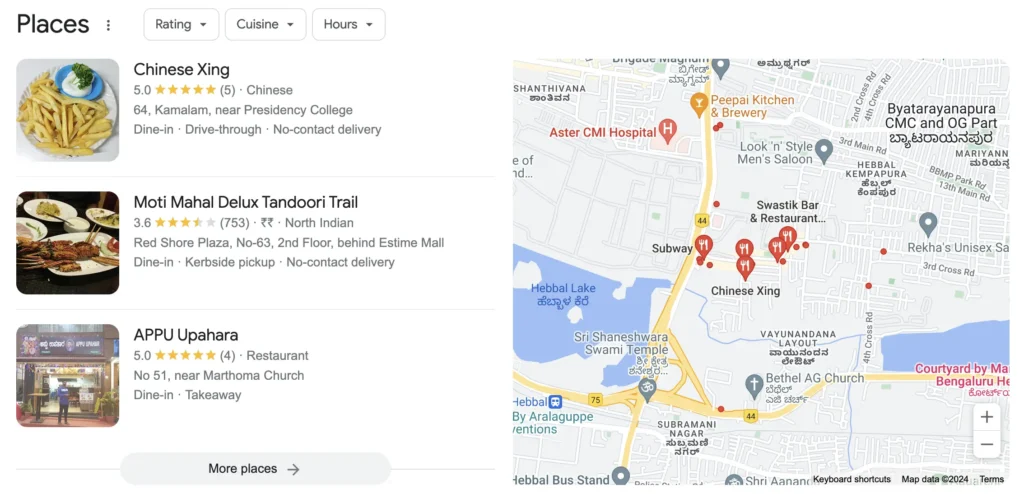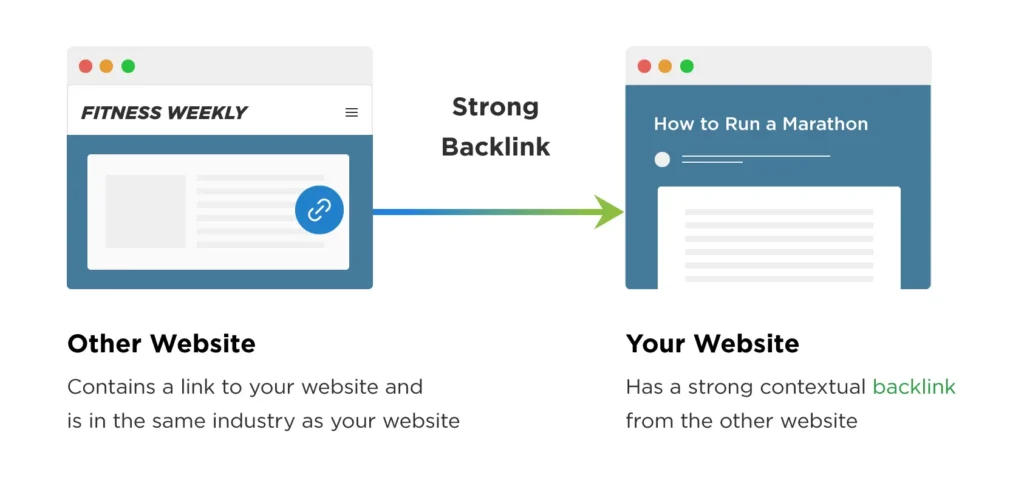Small Business SEO: The Complete 5 Step Guide to Rank Higher and Get More Customers
Search Engine Optimization (SEO) is essential for any small business that wants to be found online and acquire more customers.
With more than 3.5 billion Google searches every single day, SEO offers small businesses an unparalleled opportunity to increase visibility and drive more traffic to their website.
But with over 200 ranking factors that Google considers, SEO can often feel overwhelming for time and resource strapped business owners.
That’s why in this complete guide, you’ll discover 5 key steps to optimize your small business website for higher rankings, increased traffic, and ultimately – more sales.
Why SEO is Vital For Small Business Success
- 70% of search engine users only click on results from page 1
- The #1 organic result gets over 30% of all clicks
- High rankings increase website visitors and conversions
It’s clear that if your business isn’t ranking on that critical first Google search engine results page, you’ll miss out on valuable website traffic and potential new customers.
With website visitors increasingly coming from organic search, no online presence can afford to ignore SEO.
The good news is that with some foundational technical optimizations and a focus on creating search engine friendly content, local small businesses can absolutely compete.
This guide will walk you through the key elements step-by-step.
Let’s get started!
Step 1 – Optimize Your Google Business Profile
Registering your small business with Google My Business should be the first step in any local SEO strategy.
It’s the best way to make your business discoverable both online and on mobile devices for local searches.
Why Google My Business Matters
- Free to register – Easy for any small business to get setup
- Featured in local pack – Puts your business front and center for nearby customer searches
- Integrates with Google Maps – Help users find your location
- Manages online reviews – Customer feedback builds trust and reputation
When potential customers search for local products or services, Google My Business listings stand out prominently in the search results on both desktop and mobile.

This makes it much more likely that searchers will visit your website or physical location to make a purchase.
How To Optimize Your Listing
Registering only takes a few minutes, but optimizing your profile fully is an important foundational step for small business SEO.
Here are key elements to focus on:
- Complete profile – Fill out as many details as possible like photos, description, products/services
- Correct NAP – Ensure your business Name, Address and Phone number are accurate
- Get reviews – Ask happy customers to leave 5 star feedback
Pro tip: Learn how to add schema markup to your website to further enhance how Google interprets and displays your business information.
Invest time perfecting all aspects of your Google Business profile, as it forms the backbone of visibility for local SEO efforts.
Step 2 – Review Your Website’s Technical SEO
With a solid Google My Business foundation in place, now let’s look at how search engines technically access and understand your actual website.
Technical SEO relates to under the hood optimizations that ensure your site loads fast, is mobile friendly, and easily crawlable for search engine spiders.
It may not be as glamorous as creating viral content, but flaws here can undermine all other SEO efforts.
Technical SEO Elements To Optimize
- Page speed – Faster sites rank better
- Mobile friendly – Over 60% of searches now happen on phones
- XML Sitemaps – Help search bots discover new content
- robots.txt – Give search engines directions for what to crawl
- Structured data – Help Google understand your website’s purpose
- Alt image tags – Descriptions for visually impaired users
Running your website through tools like Google PageSpeed Insights and Google Mobile-Friendly Test can uncover flaws needing correction.
Pro tip: Learn more technical optimizations in our Complete Technical SEO Checklist.
With site speed, mobile readiness, and crawlability covered the search engines can now access all your hard work optimizing content (in the next step)!
Step 3 – Optimize On-Page Content For Target Keywords
Now that the technical groundwork is covered, it’s time to focus on creating search engine optimized content.
Your website copy not only needs to appeal to human visitors, but also clearly communicate relevancy and topical authority to search algorithms.
On-page optimization should focus on your most important target keywords.
These are the words and phrases in your niche that potential customers are actually searching for on Google which align with your products or services.
Some examples of good small business target keywords:
- Local area + industry (Denver landscaping services)
- Product/service + locality (HVAC contractors Los Angeles)
- Branded searches (Your Business Name)
SEO content optimization then involves tailoring your copy around these targets.
On-Page Factors To Optimize
- Title tags – Include target keyword near beginning
- Headings – H1 and H2 tags should reflect page topics
- Content – Use target terms appropriately throughout copy
- Meta descriptions – Summarize page purpose with keywords
- Image alt tags – Descriptions help search bots understand images
- Internal links – Connect relevant pages using keywords
Optimizing these elements to focus on your most valuable target keywords will directly improve rankings and organic visibility.
Pro tip: Learn how to identify the best keywords for your small business.
Step 4 – Build Quality Backlinks
We’ve covered the search engine visibility basics with Google My Business, Technical SEO, and on-page optimizations. Now let’s discuss the most challenging but rewarding aspect of SEO – backlink building.
Links remain one of the strongest ranking signals for Google. When reputable external websites link back to your content using custom anchor text, it sends a quality and relevance signal.
This tells Google that other trusted sites on the web are vouching for your small business expertise.

The key is to build backlinks slowly and consistently from quality sites, not focus on quantity.
Here are smart strategies to earn authoritative backlinks:
- Guest posting – Write articles for niche blogs in your industry
- Roundups – Reach out to sites that share “best local businesses” posts for your category
- Business directories – Complete your listing on niche and regional directories
- Press mentions – Pitch journalists to have your business featured in online articles
Pro tip: Check out Brian Dean’s skyscraper technique for a link building tactic that leverages your competitor’s best content.
Just a handful of strong backlinks from authority websites over time can positively influence search rankings. But stay patient, as Google will ignore and may even penalize low-quality link building tactics.
Focus on relevance and quality over quantity.
Step 5 – Track Analytics & Optimize
We’ve covered the core elements to optimize technical factors, content, and backlink earning potential. Now it’s time to track analytics to connect how your SEO efforts impact measurable business results.
Monitoring key metrics helps you double down on what’s working while pivoting away from ineffective areas:
- Rankings – See where you stand for target keywords
- Traffic – Analyze growth trends over time
- Conversions – Reduce bounce rates, increase goal completions
Google Analytics should be the starting point for any website analytics. Connect it to access detailed traffic and behavior data.
Pro tip: Learn how to setup goals and events in Google Analytics to track micro and macro conversions.
SEO is an iterative process, so diligent tracking provides the feedback needed to continually improve over time. Small tweaks informed by analytics data can have an outsized impact.
Now that you understand the complete step-by-step SEO process, it’s time to take action!
Key Takeaways – Top 5 Small Business SEO Tips
To summarize this guide’s key recommendations in optimizing for more website traffic, here are 5 concise SEO tips for small business owners:
- Perfect your Google My Business profile – This centralizes key information for local searchers.
- Fix technical flaws – Optimize site speed, mobile readiness and crawlability.
- Target keyword optimization – Research and tailor content around high-value terms.
- Earn backlinks slowly – Focus on quality over quantity from relevant sites.
- Track analytics – Connect efforts to real business outcomes.
Following these evidence-based best practices will boost your website’s search engine presence, increase qualified visitors to your site, and ultimately drive more sales and growth for your local small business.
Now over to you – which SEO opportunity stands out as most beneficial to tackle first for your business? Let me know in the comments!